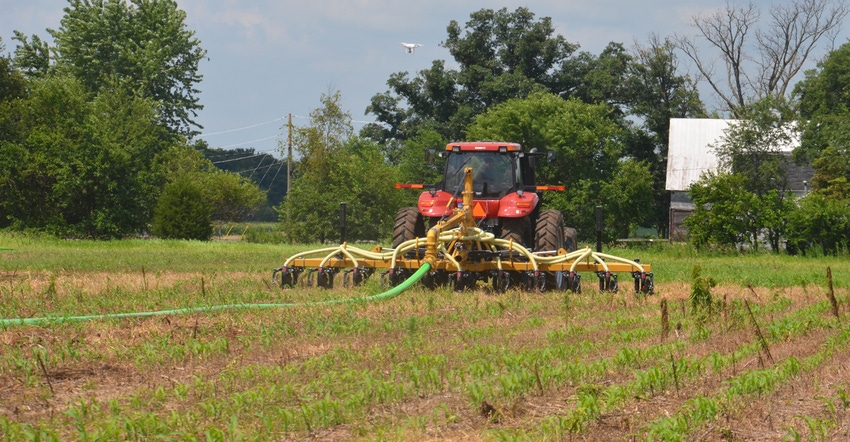November 17, 2021

Indiana is proud of its animal agriculture industry. As with all livestock, manure still happens. Higher fertilizer prices might have you asking yourself: How can I improve nutrient credits of the manure that is produced?
Here is a closer look at how you can get more value from manure:
Manure nitrogen credits. What is the nutrient content of the manure? What is the application rate? What percent of the total nitrogen applied is used in the next cash crop? How much does manure reduce your fertilizer bill?
The goal is to improve nutrient-use efficiency of manure. Use manure analysis and spreader calibration to apply the planned rate. Nitrogen is always pulling a Houdini and is tough to figure out how much credit should be given. Timing and method of applications have the greatest impacts.
Apply manure as close to crop utilization as possible. Use the pre-sidedress soil nitrate test, chlorophyll meter, in-season tissue testing and end-of-season stalk nitrate testing to fine-tune your manure nitrogen credits on your corn crop.
Phosphorus credits. Start with current soil tests. Fields closest to manure storage usually have the highest phosphorus soil test and may not need additional P for years. Fields farthest away have a lower soil test P and can use the manure P nutrients. Hauling the most nutrient-dense manure to the farthest fields helps pay for additional costs.
Injection or incorporation. Do you inject or incorporate manure? Surface manure applications are more susceptible to runoff and volatilization losses. But too much incorporation increases soil erosion potential and degrades soil further. If possible, inject liquid manure with low-disturbance injectors and incorporate dry manure just enough to get some manure-to-soil contact, or apply manure to a growing cover crop. If incorporating manure, remember to get just enough disturbance to get manure-to-soil contact, and consider adding a cover crop seeder to the tillage implement.
Cover crops. Have you figured out how to use the dual benefits of cover crops with manure? Cover crops should be standard operating procedure with all manure applications. Cover crops help to capture leftover nutrients from the previous crop plus nutrients applied with manure. This nutrient capture helps pay for the cost of seeding plus provides many other soil benefits. The only questions should be when and how to get the cover crop established in relation to the manure application.
Manure “dating” network. You read correctly! Who has manure and who wants it? Do you have manure to share or trade? Manure has nutrient value and can replace some fertilizer needs. Just starting out in no-till? Some farmers paying attention to soil health are exploring how manure aids soil biology.
Manure regulations. Follow all rules and regulations, including setback requirements from sensitive areas. With wetter falls and winters, it is even more important to know the conditions of your soil and the weather forecast prior to application and adjust accordingly. Monitor all field tile inlets, risers and outlets prior to and during applications. Avoid surface applications to frozen, snow- and ice-covered fields.
Manure still happens! How much credit can you take for it? Work to fine-tune application rates and methods to better capture the benefits of this valuable commodity.
Bailey is a state conservation agronomist with the Natural Resources Conservation Service. He writes on behalf of the Indiana Conservation Partnership.
You May Also Like




